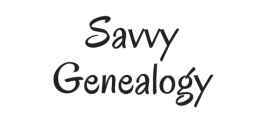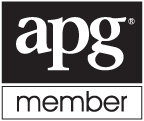Why Norway’s history is important for record keeping
Norwegian words of the day
Bondsman or sponsors of a marriage-Forloverne
Day-Dag
Month-Måned
Name-Navn, Navne
Year-Aar, År
Hello friends, welcome back! I hope everyone has had terrific week full of learning experiences. I know I’ve had my fair share this week. Have you had any success with your genealogy lately? If so, I would love to hear about it in the comments below.
So last week we talked about finding more American records to support the Passenger List that had Johanna’s fathers name and residence in Norway. We made sure we had the correct ancestor and found documents to support our findings.
Let’s look again at the Passenger List.
|
Passenger Number
|
10084
|
|
Surname
|
Krogh
|
|
First Name and Middle Initial
|
Johanna J
|
|
Age
|
20
|
|
Occupation
|
Servant
|
|
Can Read and Write
|
Yes
|
|
Nationality
|
Norway
|
|
Race or People
|
Scandinavian
|
|
Last Permanent Residence, Country and City/Town
|
Norway, Stavanger
|
|
Name and Complete Address of nearest relative or friend in country whence immigrant came
|
Father Johannes Kolbinsen
Stolsmark, Vikedal, Stavanger
|
|
Final Destination, State and City/Town
|
Minnesota, Gully
|
Her father is from Stolsmark, Vikedal, Stavanger. Now I had a place name to learn all about in Norway. I Googled it and found there’s no Stolsmark, Vikedal, Stavanger. However, there is a Vikedal, Norway in a Rogaland Parish. It took me awhile to learn that parishes over in Norway mean counties in America. Wikipedia has a short article about Vikedal https://en.wikipedia.org/wiki/Vikedal. In it, I learned that Vikedal still exists and that it’s a very small village of 436 people. There’s even a picture of the village that looks super cute. It’s great information; however, it doesn’t get me any farther along my path.
| Vikedal, Norway today |
I turned again to the Internet and found that FamilySearch has a better article about Vikedal Vikedal, Norway Genealogy. This article has loads more information then Wikipedia does. It shows that Vikedal is a village in Rogaland County, Norway. It lists church records, court records, censuses, farm names, land records, and probate records for this village. Each section has a link that takes you straight to the Norwegian website where the original records are kept. On that website, you have to do much digging to get to the original records, which we will discuss in a later blog. For now let’s just focus on learning more about the country of Norway and how they keep their records so that we can find those records on their website later.
Now I’m not going to go into all of the history of Norway. You can Google that yourself! However, the history of Norway affected how they used their records. Therefore, let’s begin with a brief summary.
Norway was it’s own country starting in the 9th century with it’s first king uniting the different tribes. This was also the start of the Viking age where the people traveled to England, Ireland, France, and Scotland. They traveled to other islands as well and established settlements. In the 11thcentury Norway was converted to Christianity namely Catholicism.
In the 14thcentury, the Black Plague hit Norway especially hard and it was in economic ruins. Therefore, the decision was made to unite with Sweden and Denmark under one ruler to stabilize the countries. This helped Norway tremendously. However, Sweden broke away from the union in 1523 and Norway stayed with Denmark until 1814. Then Sweden and Norway were together under Swedish rule until 1905. Norway then became an independent nation with its own parliamentary democracy after that. In 1905, Norwegians elected a Dane to be their next king in title only.
In the 1530s, Norway followed Denmark in converting to the Lutheran religion as their state religion. The Lutheran church was the governing body from this time through the 1700s. The Lutheran religion is still the state religion today.
During the 1500s-1700s, the church kept all of the records. The parish minister recorded all births, marriages, deaths, and moving from one parish to another. Because Norway was united with Sweden and Denmark at different times, you will find records in Swedish or Danish. This didn’t happen often until a state government was formed where state records were kept. These usually were in Danish or Swedish depending on who ruled Norway at the time. Then the state would request copies of church records be sent to their government facilities from each of the parishes. The church continued to record births, marriages, and deaths then send copies to the local government.
That’s basically the history in a nutshell. Other records came along such as probate records, tax records, censuses, and court records when the state and local governments were formed. No civil records were kept until 1876. That means the church records are the vital records of Norway.
I think this is a good stopping point for now. We’ll talk about birth records next week
In the mean time…happy hunting!
Tiffany
cities, economy, farms, Norway history, record keeping, royalty, wars

